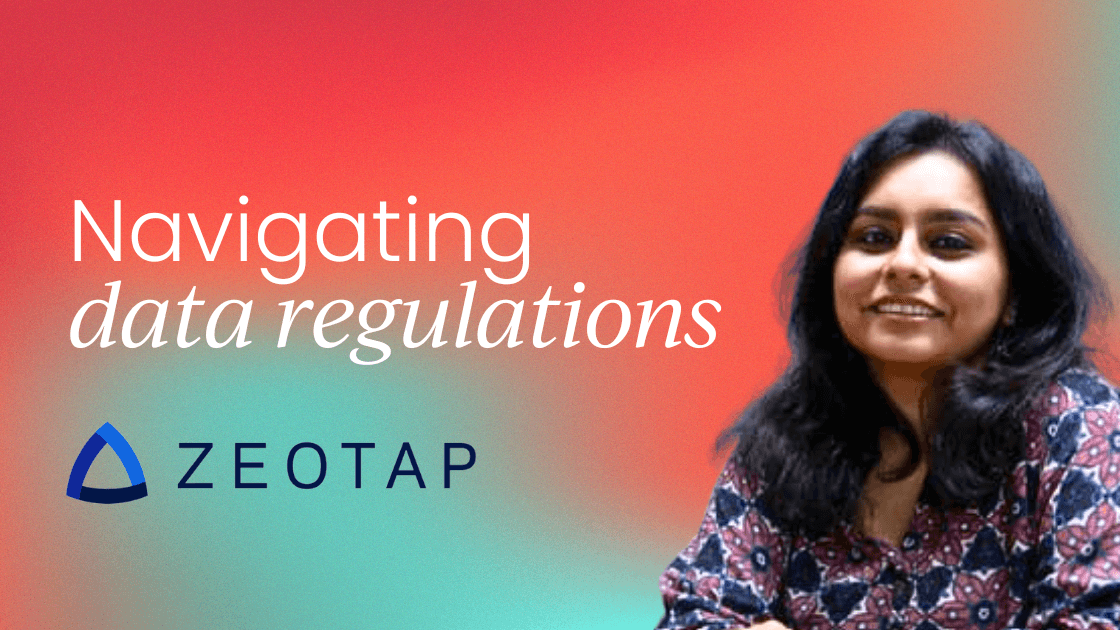Data isn’t just a buzzword anymore – it’s the lifeblood of modern business, especially for companies betting on product-led growth. In this new landscape, your product isn’t just what you’re selling; it’s your best salesperson, your customer service rep, and your retention specialist all rolled into one.
But here’s the thing: to make that product truly shine, you need data. The kind that lets you peek inside your users’ minds and understand what makes them tick. With the right information at your fingertips, you can craft experiences that don’t just satisfy customers – they wow them.
This is particularly important in the B2B world, where relationships are everything. Smart use of data can help you uncover the subtle needs of your clients, allowing you to tailor your offerings and build partnerships that stand the test of time.
Of course, it’s not all smooth sailing. As we go further into this data-driven future, we’re also wrestling with issues like data privacy. Regulations like GDPR and CCPA are changing the rules of the game, and businesses need to stay on their toes.
But don’t let that scare you off. When handled right, data is still your secret weapon for driving innovation, building trust, and fueling sustainable growth. The key is knowing how to wield it.
Challenges and balancing compliance with growth
Data privacy regulations like the GDPR in the EU and CCPA in the U.S. have significantly changed how businesses handle personal data, presenting both challenges and opportunities.
These regulations aim to protect consumer privacy and give individuals more control over their data, but they also impose strict requirements that can complicate efforts to leverage data for growth.
A major challenge is meeting these stringent compliance requirements. Companies must implement robust data protection measures, ensure transparency, and obtain clear user consent.
For instance, GDPR mandates that businesses provide users the ability to access, correct, or delete their data, and maintain detailed records of data processing activities. Non-compliance can lead to severe financial penalties.
Additionally, businesses often need to overhaul their data management frameworks to comply with these regulations. This may involve integrating new technologies and updating processes, which can be both technically challenging and costly.
As consumer expectations around data privacy evolve, businesses must not only comply with regulations but also build trust through transparent and ethical data practices.
Balancing compliance with growth requires embedding regulatory considerations into the business strategy.
Effective compliance management is more than just avoiding penalties; it involves aligning compliance with business goals to drive growth and foster customer trust. Leveraging technology and automation can streamline compliance processes, making businesses more agile and competitive.
Strategically aligning compliance with business objectives can improve performance, minimize risks, and open up market opportunities.
When viewed as a proactive strategy, compliance becomes a facilitator of growth rather than a hindrance, providing a solid foundation for innovation and expansion in a regulated environment.
To thrive in this landscape, companies must adopt business strategies that naturally integrate compliance with growth efforts. One such approach is product-led growth (PLG), where the product itself becomes the primary driver of customer engagement and business expansion.
By harnessing data effectively within the bounds of regulatory frameworks, PLG not only addresses compliance challenges but also leverages them as an opportunity to build stronger, more personalized customer experiences.
Understanding product-led growth
PLG is a business strategy where the product itself drives customer acquisition, conversion, expansion, and retention.
Unlike traditional sales-led models, PLG focuses on delivering value through the product, creating compelling user experiences that naturally encourage adoption and loyalty.
Central to this approach is the strategic use of user data, which allows companies to personalize experiences and optimize the product journey.
PLG relies on customer-centric development, emphasizing the need to continuously align product capabilities with user needs and preferences. This involves gathering and analyzing customer data to customize user journeys and enhance satisfaction.
Key principles of PLG include a commitment to customer-centric development, which involves creating products that directly address user needs through agile processes and continuous feedback loops.
As discussed by ProductPlan, customer-centricity extends beyond just collecting feedback – it involves embedding customer insights into every stage of the product life cycle, from conceptualization and design to deployment and iteration.
This approach ensures that products evolve based on real-world use cases and emerging user needs, creating a strong alignment between the product and its users.
Overview of key data privacy regulations
The GDPR and CCPA are two of the most significant data privacy regulations, but they are not the only ones. GDPR, applicable in the European Union, sets strict rules on data collection, storage, and usage.
It requires explicit user consent for data processing, grants users rights to access and delete their data, and mandates breach notifications. These rules aim to enhance transparency and accountability among organizations handling personal data.
Similarly, the CCPA, which applies to businesses operating in California, USA, grants consumers greater control over their personal information. It allows consumers to know what data is being collected, how it is used, and to whom it is sold.
Consumers can also request the deletion of their data and opt out of its sale. These regulations represent a broader trend towards increased consumer rights and data protection, compelling organizations globally to adopt more stringent data management practices.
The impact of these regulations on data collection and usage is profound. Businesses must redesign their data handling processes, ensuring compliance with stricter consent and transparency requirements.
This often involves restructuring digital marketing strategies and investing in technology and staff training to maintain adherence to privacy standards. While these regulations create challenges, they also drive organizations towards more responsible and transparent data practices, ultimately fostering greater consumer trust.
Balancing compliance and data utilization
Maintaining compliance with data privacy regulations is crucial for building trust and credibility with consumers. Compliance is not just about avoiding fines – it demonstrates a commitment to ethical data practices, which can enhance customer loyalty and corporate reputation.
A privacy-by-design approach, which integrates data protection into the design of IT systems and business practices, ensures that data privacy is considered at every stage of product development.
Robust data governance is also essential. Establishing clear policies and frameworks for data handling helps organizations manage data responsibly. Effective data governance allows businesses to define data accountability and ownership, aligning innovation efforts with compliance requirements.
Leveraging technological advancements, such as anonymization and encryption, can enhance data protection without compromising innovation.
By adopting these practices, businesses can confidently utilize data to drive growth while maintaining a strong commitment to privacy and regulatory compliance, setting the stage for sustainable success in an increasingly data-driven world.
Strategies for navigating regulations
To effectively navigate stringent data privacy regulations, organizations must implement strategies that ensure compliance while enabling data-driven growth:
- Data minimization: Adopting data minimization principles helps companies collect and retain only the data necessary for their specific purposes. This reduces the risk of data breaches and ensures compliance with regulations like GDPR, which mandate that data collection is limited to what is strictly necessary.
- Transparency and consent: Clear communication with users about data collection practices is essential. Companies must provide detailed information about what data is being collected, how it will be used, and obtain explicit consent from users. This builds trust and ensures smoother regulatory compliance.
- Anonymization and encryption: Implementing data anonymization and encryption techniques helps protect user identities and ensures that personal information remains confidential. Anonymization removes identifiable elements from data sets, while encryption secures data by making it readable only to those with the decryption key.
- Regular audits and updates: Continuously reviewing and updating data policies and practices is crucial for maintaining compliance in a rapidly changing regulatory environment. Regular audits help organizations identify gaps in their compliance strategy and implement necessary adjustments.
Leveraging data for product-led growth
Leveraging data effectively is crucial for driving product-led growth while complying with privacy regulations. Personalizing user experiences within regulatory bounds involves using anonymized data and explicit user consent to tailor content and interactions.
This ensures compliance while leveraging insights drawn from customer behaviors and preferences. Data-driven decision-making helps prioritize product features that align with user needs and market demands.
By analyzing user behavior data, companies can pinpoint the most impactful areas for development, optimizing resource allocation and accelerating product improvement cycles. Feedback loops that respect user privacy are also essential, as they allow companies to continuously adapt their offerings based on user input.
To fully realize the potential of data in a product-led growth strategy, businesses must navigate various compliance challenges, ensuring that their data strategies are robust, secure, and aligned with evolving regulatory requirements.
Challenges and solutions in implementing compliant data strategies
Implementing compliant data strategies involves navigating a range of challenges that can complicate the effective use of data while adhering to privacy regulations like GDPR and CCPA.
Some of the most common challenges include integrating disparate data sources, maintaining data privacy in a constantly evolving regulatory environment, and balancing the need for data-driven insights with stringent compliance requirements.
Addressing these challenges is essential for businesses that want to leverage data to drive growth while maintaining trust and avoiding legal repercussions.
Challenge one: Integration of disparate data sources
Many organizations struggle with integrating data from various sources, such as customer databases, CRM systems, marketing platforms, and third-party data providers.
Disparate data silos can lead to inconsistent data quality, duplicate records, and inefficiencies in data processing. Without a unified data management approach, it becomes challenging to ensure that all data handling complies with privacy regulations, leading to potential compliance gaps.
Challenge two: Maintaining data privacy amidst evolving regulations
The regulatory landscape for data privacy is continually evolving, with new rules and updates regularly introduced at both local and international levels.
Keeping up with these changes requires continuous adjustments to data management practices, which can be resource-intensive. Additionally, businesses must navigate varying compliance requirements across different jurisdictions, further complicating their data strategies.
Challenge three: Balancing data utilization and compliance
Companies often face the dilemma of maximizing the use of data for insights and decision-making while adhering to strict compliance requirements.
The challenge lies in using data in ways that drive personalization, targeting, and overall business growth without overstepping legal boundaries. This balancing act requires careful planning and robust governance frameworks to ensure that data-driven strategies align with privacy laws.
Solution one: Centralize data management
One effective approach to overcoming integration challenges is centralizing data management through platforms that consolidate disparate data sources.
Implementing a centralized data management system, such as a Customer Data Platform (CDP) or a Master Data Management (MDM) solution, allows businesses to create a unified view of customer data.
This not only improves data accuracy and quality but also simplifies compliance by ensuring that all data is managed consistently according to regulatory requirements.
Solution two: Leverage advanced analytics and AI
Advanced analytics and AI can automate data processing tasks, enhancing both efficiency and compliance.
AI-driven tools can help identify and rectify data inconsistencies, enforce data privacy rules, and provide real-time insights into compliance status.
Machine learning algorithms can also be used to detect patterns of non-compliance and predict potential risks, enabling proactive management of regulatory adherence.
Solution three: Establish continuous compliance monitoring
To keep up with the dynamic nature of data privacy regulations, businesses should establish continuous compliance monitoring processes. This involves using tools that can automatically track changes in regulations and adjust data handling practices accordingly.
Regular audits, combined with real-time monitoring systems, ensure that compliance measures are always up-to-date, reducing the risk of inadvertent breaches.
Additionally, implementing privacy management software can streamline the process of managing consent, handling data access requests, and maintaining audit trails, all of which are critical for ongoing compliance.
Solution four: Implement privacy-by-design principles
Embedding privacy considerations into the design and development of systems, products, and processes from the outset – known as Privacy-by-Design – can significantly reduce compliance risks.
This proactive approach ensures that data protection is not an afterthought but a fundamental component of the company’s operations, making it easier to adapt to regulatory changes and maintain consumer trust.
Solution five: Invest in training and awareness
Ensuring that all employees understand data privacy regulations and their role in maintaining compliance is crucial. Regular training sessions and clear communication of compliance policies help foster a culture of privacy within the organization.
By equipping employees with the knowledge and tools needed to handle data responsibly, businesses can reduce the likelihood of unintentional non-compliance and strengthen their overall data strategy.
Conclusion
Balancing data privacy compliance with leveraging data for growth is a complex but essential task for businesses today.
By adopting a strategic approach that integrates regulatory considerations into business planning, companies can navigate compliance challenges while driving innovation and maintaining competitive advantage.
A focus on privacy-by-design, robust data governance, and continuous adaptation to regulatory changes will enable businesses to build trust, enhance customer loyalty, and achieve sustainable growth in a data-driven world.






